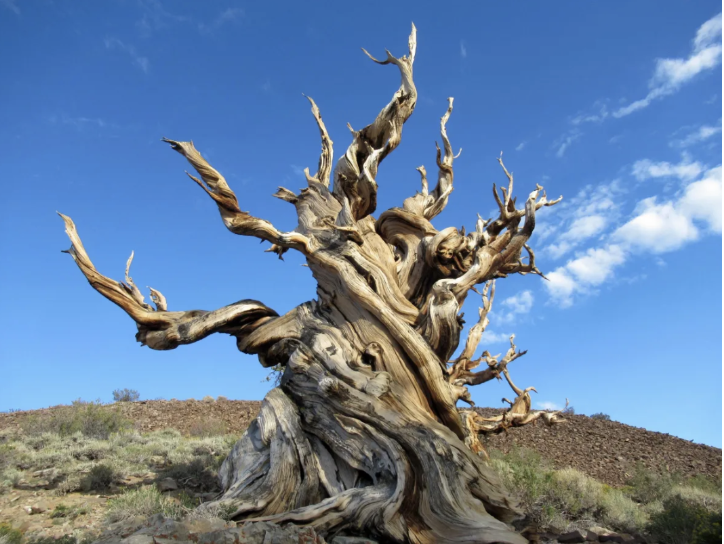Standing silent yet alive, hold the world’s stories in their rings —— trees, a reminder to us that fascinating organisms often speak without words.
As a matter of fact, trees make up some of the oldest known living organisms on the planet. Certain types of trees attain incredible longevity using numerous capabilities. Some have the ability to replace lost or damaged organs, a system that allows portions of the tree to survive whether or not the rest of the tree is alive, synthesis of defensive compounds to ward off invaders, even a hormonal control system, and a lot more.
Among these remarkable survivors stands one of the most extraordinary examples: the Methuselah tree, a bristlecone pine believed to be over 4,842 years – 48 centuries – old. It is a non-clonal tree – meaning that they don’t reproduce through cloning, making their trunks as old as their roots.
When it was found in California’s White Mountains, it had already endured thousands of years due to its resilience – even before Stonehenge had been built. Perhaps it even witnessed things humans never have.
What are bristlecone pines?
Bristlecone pines, Pinus longaeva, are trees native to high-altitude conditions of the western United States. They are exceptionally well adapted to harsh, rocky conditions where few other plants exist. They occur on rocky slopes and ridges usually between 9,800 and 11,000 feet above sea level. The trees often have a weathered, twisted appearance with sparse, hardy leaves. Their appearance is rugged, almost sculptural, telling the story of survival against the odds, etched by time and elements.
What caused the Methuselah tree’s longevity?
The Methuselah tree’s extraordinary lifespan can be attributed to a combination of environmental adaptations and unique biological traits:
Adaptation to Harsh Environments
Bristlecone pines thrive where few others dare to grow. In soils stripped of nutrients and climates marked by extremes, they stand solitary, free from the clamor of competition. Their surroundings, though severe, offer stability—a shield from diseases and invasive species that flourish in gentler conditions.
Partial Mortality
These trees hold an almost poetic resilience, choosing survival over perfection. They sacrifice what is lost or damaged, isolating wounds to protect the whole. In this way, they persist, thriving even as parts of them fade – a living reminder of nature’s relentless will to endure.
Resinous Wood
Their wood, dense with resin, acts as both armor and timekeeper. Resistant to decay, pests, and fungi, it ensures that even long-dead limbs remain as monuments to endurance. This protective nature shelters the living heart of the tree, guarding it against the ravages of time.
———
The Methuselah tree, standing resilient in the windswept White Mountains, is not just a marvel of nature but a living connection to a distant past. It embodies the quiet power of persistence and the intricate strategies life employs to endure. Perhaps, in its rings, it holds lessons we have yet to learn about balance, patience, and the art of thriving against all odds.
Camu, Basil. “The World’s Oldest Trees.” Leaf & Limb, 4 July 2017, www.leaflimb.com/the-worlds-oldest-trees/. Accessed 22 Jan. 2025.
“The Living Forest: What Tree Rings Tell Us about the Life of a Tree.” Arborday.org, 2017, www.arborday.org/perspectives/living-forest-what-tree-rings-tell-us-about-life-tree.
Lanner, R. “Why Do Trees Live so Long?” Ageing Research Reviews, vol. 1, no. 4, Sept. 2002, pp. 653–671, https://doi.org/10.1016/s1568-1637(02)00025-9.

